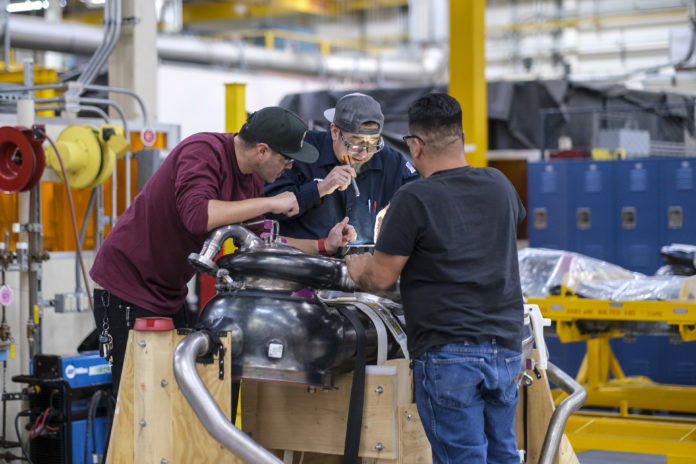The biggest news for Aerojet Rocketdyne in the last six months happened at the end of July.
That was when L3Harris Technologies Inc. announced it had closed on its acquisition of the storied company.
Still based in El Segundo, with significant operations in Chatsworth in the San Fernando Valley, Aerojet Rocketdyne has been fully absorbed by its new owner.
The acquisition diversifies the L3Harris portfolio, adding considerable long-cycle backlog and broad expertise that enables opportunities in missile defense systems, hypersonics and advanced rocket engines, among other areas.
The firm will be known as Aerojet Rocketdyne, an L3Harris Technologies company.
Christopher E. Kubasik, chief executive of L3Harris, said that he was thrilled to welcome the 5,000 employees of Aerojet to the L3Harris team.
“With national security at the forefront, we’re combining our resources and expertise with Aerojet Rocketdyne’s propulsion and energetics capabilities to ensure that the Department of Defense and civil space customers can address critical mission needs globally,” Kubasik said in a statement.
The company also announced that Ross Niebergall will serve as president of the Aerojet segment at L3Harris.
“Our customers demand a competitive environment that produces innovative, agile solutions,” Niebergall said. “We will expand on the strong Aerojet Rocketdyne heritage to enhance production and deliver on those expectations.”
That heritage includes making engines for the Saturn V rocket that took man to the moon in late 1960s to early 1970s, as well as the main engines for the Space Shuttle.
In fact, some shuttle main engines, also known as the RS-25, are being repurposed in Chatsworth to be used aboard Artemis II, the NASA mission that will take humans around the moon in the next year or two.
The Valley factory is also producing new RS-25 engines for subsequent Artemis missions to the moon.
During each launch of the Space Launch System, NASA’s heavy lift rocket, four RS-25 engines will generate more than 2 million pounds of combined thrust as they burn for just over eight minutes and consume more than 90,000 gallons of propellant, Aerojet said.
With its use of liquid hydrogen and liquid oxygen, the only exhaust coming from the RS-25 engines is clean, superheated water vapor (or steam) with zero carbon emissions.
RS-25 program director Doug Bradley said that it was a privilege to be part of the Aerojet team designing, manufacturing, assembling and testing the rocket engines.
“Watching the first SLS launch during the Artemis I mission (in November 2022), with the help of our powerful RS-25 engines, took my breath away,” Bradley said. “We are truly at the dawn of a new era of human deep-space exploration.”
The company also contributed the main engine and auxiliary engines for the Orion service module used on Artemis, as well as thrusters used on the crew module.
